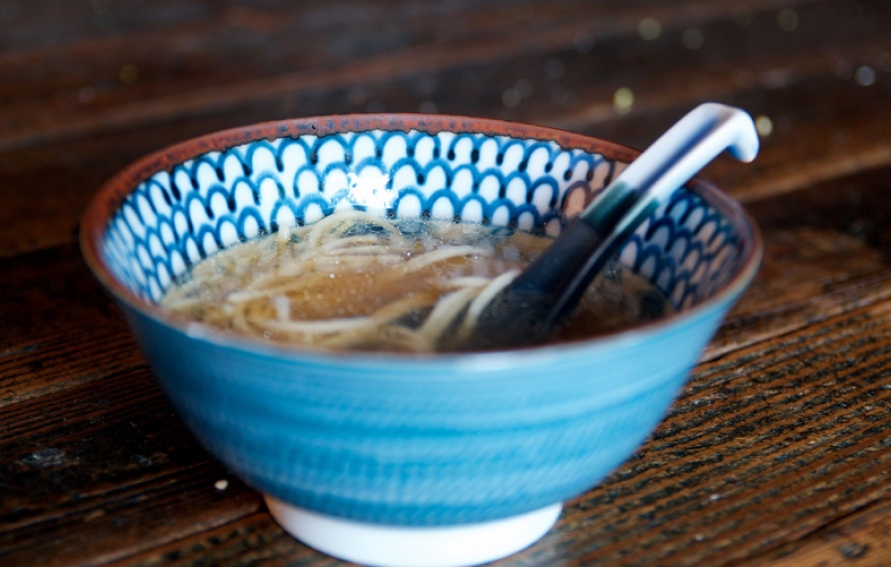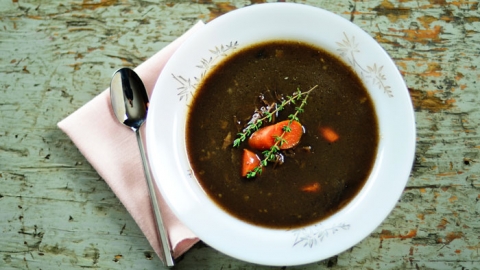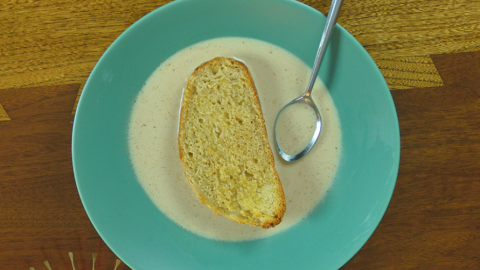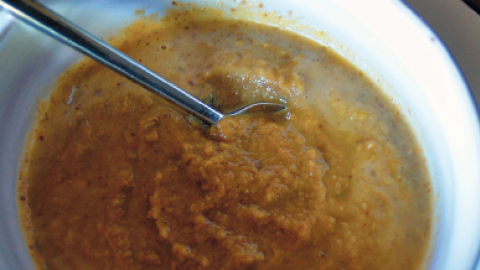Instructions
Chicken Stock
Beef Stock
Preparation
Invest in Stocks
From scratch stock well worth the time it takes
Ivy Tech Culinary Arts Instructor chef George Albiez shares his stock making techniques with writer Tricia McCann
TM: What is the most important step to take when making stock?
GA: Having the right, freshest ingredients. You should also keep in mind the four cardinal rules of making a stock:
One: Use cold water. Two: Never boil stocks or they will get cloudy. Three: Skim the top frequently to remove impurities. Four: Let it go for a long time. When making stocks, longer is better. I do overnight for beef stocks.
TM: What about stock ingredients?
GA: I use half as much bones as water and about 10% mirepoix. The mirepoix should measure out to about half onion, a quarter celery and a quarter carrot. Herbs in the mirepoix are usually thyme, bay leaves and parsley stems, which add a subtle flavor.
TM: For your oxtail soup (featured in our Winter 2015 issue), what type of stock and bones do you use?
GA: I use beef. When making any beef stock, I use the joint or knucklebones. The fresher the better, since they usually have less fat and more collagen to give flavor to your stock.
TM: Where could someone go to find bones to make their stock?
GA: Any butcher or meat shop can reserve bones. Ask your local butcher to save them for you!
Tricia McCann is a South Bend native and recent IU South Bend graduate. She travels frequently in the name of good food and new recipes. It is not uncommon to find her at markets and breweries soaking in the local flavor.













